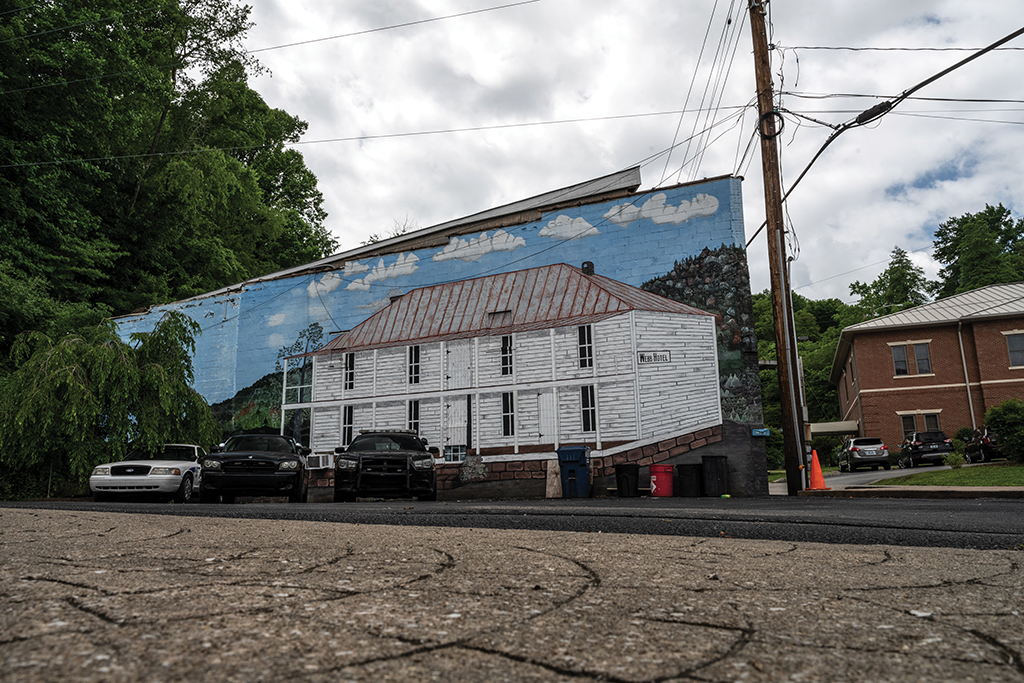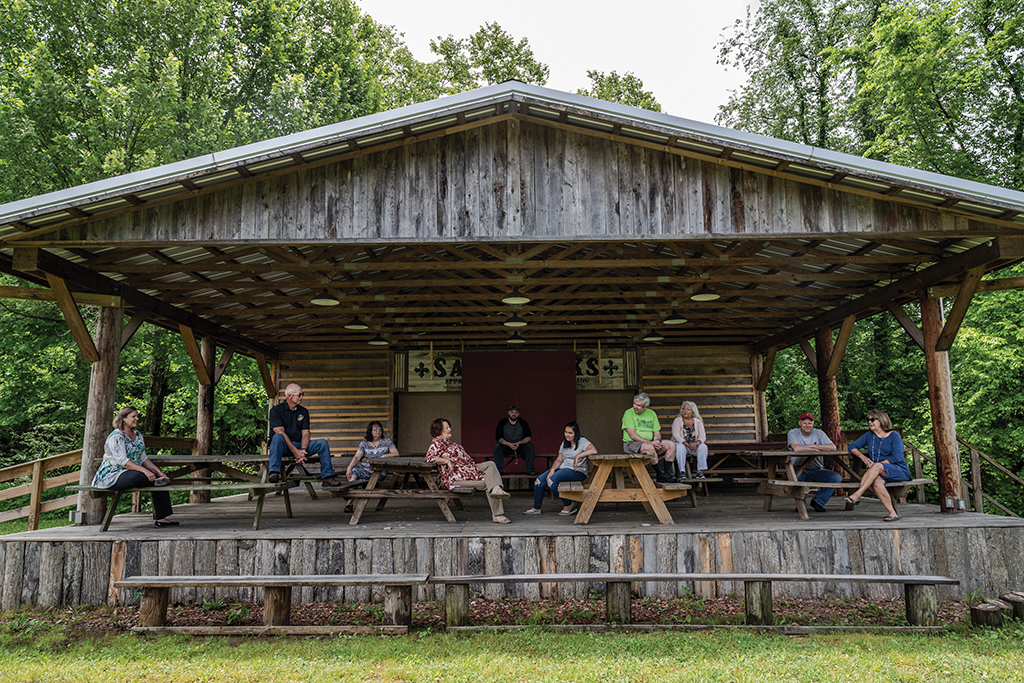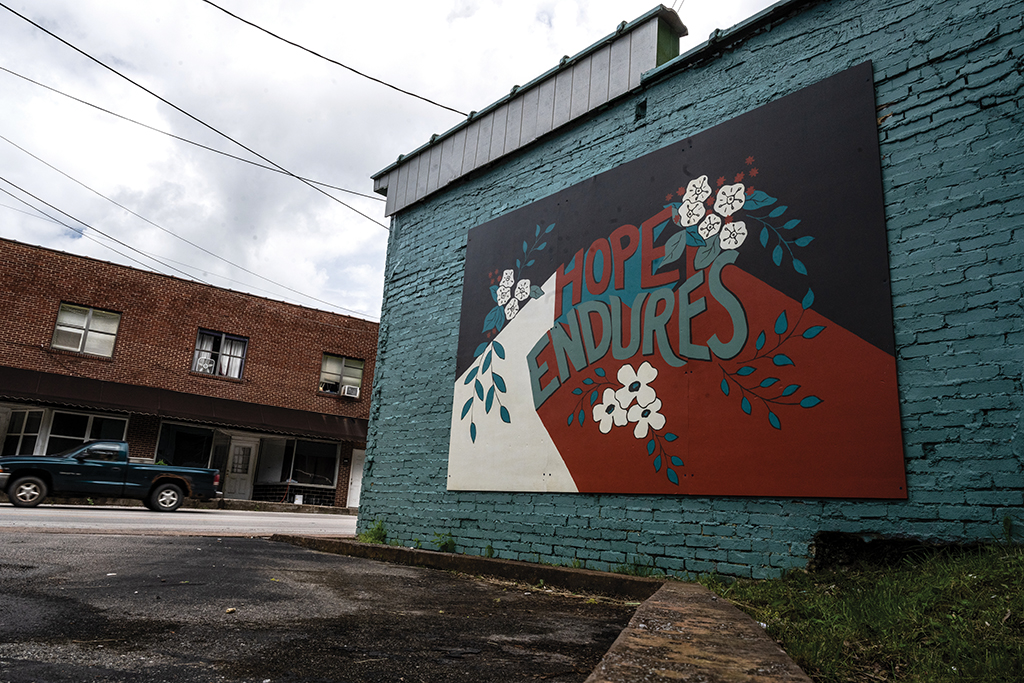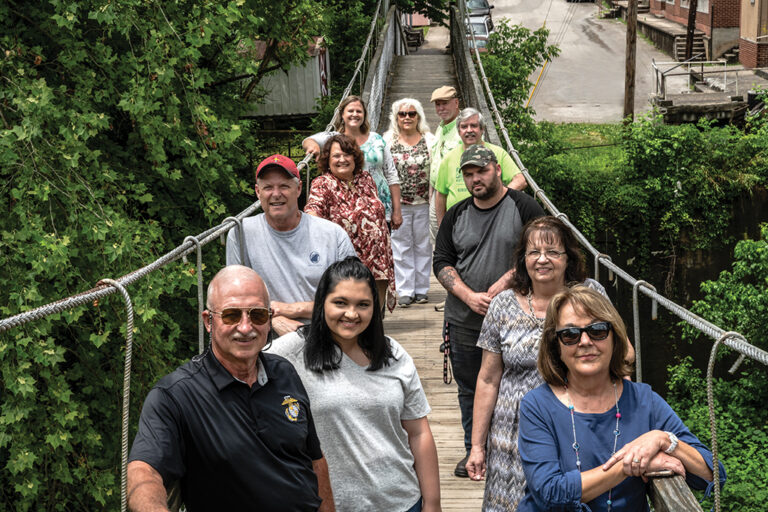Outside the region itself, stories of Appalachia tend to focus on what’s missing. In Clay County, Ky., folks are working to change that. There are better stories to tell, if people would only listen.
A New York Times article published in 2014 labeled Clay County the hardest place to live in America. And true, the decline of coal in this out-of-the-way county brought hard times for its people. But for all the depressing statistics, there wasn’t much, if any, notice of a community pulling together to get each other through that rough patch, or the good things around the county that people from out of town might be interested in.
For example, since 2012, a cast of 50 to 75 community theater performers calling themselves “Monkey Dumplins” have told the true stories of their lives and local history, unscripted, to an audience of 150 viewers. In Manchester, that’s nearly 10 percent of the population, an amazing draw.

Vanda Rice, president of Stay in Clay, a grassroots organization devoted to community revitalization, has lived in Clay County her entire life. The colorful theater troupe leader and retired speech pathologist knows how to tell a story and teaches all comers how to tell their own.
“Now, these are not Jack tales,” she said, referring to a collection of folk tales from the southern Appalachian region that center on a single character, the irrepressible Jack, “although Jack tales are great. These are real stories from real people.”
Their next performance is titled “Work Hard, Tell the Truth, Do the Right Thing” and will focus on local heroes who embody these values. Everyone in the community is welcome to perform, regardless of experience.
“We’ve had somebody come up the day before opening night and say, ‘Vanda, I’ll be in Monkey Dumplins,’ and I’m going, ‘Sure, come on,’” Rice said. “If you know the story, you can play the role.”
Pride has to start with yourself. Once your stories are on stage, and you see all these people embracing who you really are—you know, we’ve seen people’s shoulders go back and their heads go up. … They get that standing ovation at the end and are like, ‘Wow, they’re standing, they’re giving me a handclap.’
Vanda Rice
The stories are important because for the people who live there, they inspire a sense of pride.
“Pride has to start with yourself,” Rice said. “Once your stories are on stage, and you see all these people embracing who you really are—you know, we’ve seen people’s shoulders go back and their heads go up, people who have never been on stage before. They get that standing ovation at the end and are like, ‘Wow, they’re standing, they’re giving me a handclap.’”
The handclap is for people from all walks of life—old and young, the unemployed and struggling, and those coming out of the justice system who need pride as well as connection to the community to rebuild their lives.
Monkey Dumplins is just one initiative Rice leads to change the narrative of Clay County. Along with a group of grassroots volunteers, she has also spearheaded efforts to clean up downtown, paint murals on the sides of buildings and boost tourism dollars. This had all been going on since 2012, two years before the Times piece dented their spirits.
“We cried,” Rice said, referring to the article. “We thought we were working our cans off trying to make a difference. Then you had a publication that never set foot in our county that had us thinking ‘Who in their right mind would want to come here?’ So, after we wiped our tears and picked ourselves back up, we said, ‘Yes, it is tough to live here, but boy, we have a lot of great things going on.’”

What they have, not what they don’t
Monkey Dumplins anchors the broader community effort of Stay in Clay, formed in 2012 after Rice and colleagues attended the annual Leadership Summit at Berea College’s Brushy Fork Leadership Institute. Brushy Fork, named after a local stream, focuses on developing community leadership in the Appalachian region. The pilot program began in 1988, founded by then-Berea College President John Stephenson, himself a renowned Appalachian scholar and executive director of the Appalachian Regional Commission.
At the leadership summit, the group met with Dr. Vaughn Grisham, director emeritus of the McLean Institute for Community Development and author on the subject of community revitalization. Rice, along with Amy Dunzeiler, Margy Miller and Tammy Pennington, formed their grassroots organization. With the help of Brushy Fork, they joined with neighboring Jackson County to apply for a grant to bring Dr. Grisham to their communities. Grisham noted the lack of money in both places but encouraged them to look for their “low-hanging fruit,” projects that didn’t require money to accomplish.
“So,” Rice said, “we asked, ‘What do we have?’ We have mountains and streams. We have stories. We have old, run-down buildings. We have all these things that are already here, so what are we going to do with them?”
They had stories, and at the next leadership summit, Stay in Clay members discovered what they could do with them. The keynote speaker that year was author and consultant Joy Jinks, who told the story of Colquitt, Ga., a small town once dependent on the cotton and peanut industries that launched a community theater group they called “Swamp Gravy.” In conjunction with Story Bridge, an organization that specializes in bringing local stories to the stage, Swamp Gravy created an entire economy around local theater.
Donna Daniels ’89, Brushy Fork’s director, said the tale of Colquitt had a familiar ring for the Clay County delegation. Just as when cotton and peanuts went bust in Colquitt, when coal left Clay County, it took people with it.
“The people in that community were told there was a ‘brain drain’ because everybody was leaving,” Daniels said. “Jinks considered the concept and said, ‘You know, you’re telling the people who are staying here that all the smart people are leaving. What’s that saying about them?’”
Swamp Gravy produces plays telling the histories, stories and folklore of their area to offer a counterpoint to what Daniels calls “deficit narratives.”

“That narrative can become a part of the way people view themselves and the world,” Daniels said. “Community theater is a way that really uses local stories to shift that narrative. Then there’s this aspect of how people’s attitudes change about themselves, how they see themselves as leaders.
“It was a really unconventional way to get people civically engaged. So the folks in Clay County grabbed a hold of that and said they were going to do the same thing.”
Monkey Dumplins was just the beginning of revitalization efforts in the county. Rice and her delegation attended the Brushy Fork Leadership Summit each year and came away with new ideas.
One was to take advantage of a feature that was unique to Clay County. There are more swinging bridges per capita there than anywhere else in the state. After restoring 10 of these bridges, the community petitioned the legislature to designate Clay County “The Land of Swinging Bridges.” With the moniker came a new sense of identity and a draw for tourism.
“Now we have people coming to our county to tour the swinging bridges,” Rice said. “You can use your history to build your future.”
The possibility of tourism brought to light other low-hanging fruit. People visiting would need places to stay and eat. There was only one hotel in Manchester, but there were many empty houses, and the advent of Airbnb brought a new financial opportunity, as would a new restaurant tax.
And if Manchester was going to be hosting company, other things needed to happen. Stay in Clay gathered local volunteers to clean up downtown and to begin a project to paint murals on the buildings. Brushy Fork provided assistance in applying for grants to pay for these revitalization projects.
“I had never written a grant before, so they walked us through the process,” Rice said. “We were funded for the materials and leadership to help us learn how to paint murals on old blank walls.”
The grant enabled Stay in Clay to connect with artist JoAnn Butts, who instructed the residents on how to prepare exterior building walls for the project, advising on the kind of paint and sealant needed.
“JoAnn didn’t do it for us,” Rice added. “She empowered us to be able to do it ourselves. We have four large wall murals based upon what we learned. One of them covers the entire side of a building. We did that ourselves.”
They are creative. They are resilient. They are hardworking. They don’t give up easily, and these are the people who will come out to help you.
Vanda Rice
Other projects they did themselves include building a community stage, upgrading the downtown Manchester Riverwalk, designating Manchester as a Kentucky Trail Town and conceptualizing the new Saltworks Festival, which honors the town’s beginning in the salt industry. The group also launched a website called Stay in Clay that highlights the area’s attractions.
With each new project completed, pride rises within a scrappy group of volunteers trading in what Rice calls “a relationship economy,” a system that relies on people rather than money. In Manchester, Stay in Clay has brought together a retired coal miner and veteran, the local jailer, a software engineer and a college student, just to name a few, to tell the positive stories of the county’s past and create a new future from the ground up.
“They are creative. They are resilient. They are hardworking. They don’t give up easily, and these are the people who will come out to help you,” Rice said.
Much of the work that has been done in Clay County can be a model for other places in difficulty. A crucial aspect of this model is ensuring that community efforts are truly inclusive of everyone, so that people as well as places have the opportunity to focus on what they have rather than what they don’t. In Clay County, this includes women inmates from the nearby prison, residents at the local addiction recovery center and men leaving the judicial system and living at a halfway house.
“It’s not just having a more inclusive table, but being inclusive about who builds the table in the first place,” Daniels said. “This program is valuable to these communities because it provides an opportunity that’s not there for them. If they know somebody who can support them in that re-entry into society, then it opens doors for them that might not otherwise be there.”
And when that happens, one imagines, their shoulders go back, their heads go up and they get a handclap.


